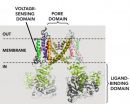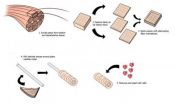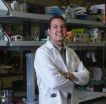(Press-News.org) A new study, published December 27 in the open access journal PLOS Biology, finds that vector-borne and parasitic diseases have substantial effects on economic development across the globe, and are major drivers of differences in income between tropical and temperate countries. The burden of these diseases is, in turn, determined by underlying ecological factors: it is predicted to rise as biodiversity falls. This has significant implications for the economics of health care policy in developing countries, and advances our understanding of how ecological conditions can affect economic growth.
According to conventional economic wisdom, the foundation of economic growth is in political and economic institutions. "This is largely Cold War Economics about how to allocate property rights—with the government or with the private sector," says Dr Matthew Bonds, an economist at Harvard Medical School, and the lead author of the new study. However, Dr Bonds and colleagues were interested instead in biological processes that transcend such institutions, and which might form a more fundamental economic foundation.
The team was intrigued by the fact that tropical countries are generally comprised of poor agrarian populations while countries in temperate regions are wealthier and more industrialized. This distribution of income is inversely related to the burden of disease, which peaks at the equator and falls along a latitudinal gradient. Although it is common to conclude that economics drives the pattern of disease, the authors point out that most of the diseases that afflict the poor spend much of their life-cycle outside the human host. Many cannot even survive outside the tropics. Their distribution is largely determined by ecological factors, such as temperature, rainfall, and soil quality.
Because of the high correlations between poverty and disease, determining the effects of one on the other was the central challenge of their statistical analysis. Most previous attempts to address this topic ignored disease ecology, argue Bonds and colleagues. The team assembled a large data set for all of the world's nations on economics, parasitic and infectious vector-borne diseases, biodiversity (mammals, birds and plants) and other factors. Knowing that diseases are partly determined by ecology, they used a powerful set of statistical methods, new to macroecology, that allowed variables that may have underlying relationships with each other to be teased apart.
The results of the analysis suggest that infectious disease has as powerful an effect on a nation's economic health as governance, say the authors. "The main asset of the poor is their own labor," says Dr Bonds. "Infectious diseases, which are regulated by the environment, systematically steal human resources. Economically speaking, the effect is similar to that of crime or government corruption on undermining economic growth."
This result has important significance for international aid organizations, as it suggests that money spent on combating disease would also stimulate economic growth. Moreover, although diversity of human diseases is highly correlated with diversity of surrounding species, the study indicates that the burden of such human disease actually drops when biodiversity rises. The analysis is inconclusive about why this effect is so strong. The authors suggest that competition and predation limit the survival of disease vectors and free-living parasites where biodiversity is high. The research sets the stage for a number of future analyses that need to lay bare the relationship between health care funding and economic development.
### Funding: MHB is funded by NIH Grant #K01TW008773 from the Fogarty International Center. The funder had no role in study design, data collection and analysis, decision to publish, or preparation of the manuscript.
Competing interests: The authors have declared that no competing interests exist.
Citation: Bonds MH, Dobson AP, Keenan DC (2012) Disease Ecology, Biodiversity, and the Latitudinal Gradient in Income. PLoS Biol 10(12): e1001456. doi:10.1371/journal.pbio.1001456
CONTACT:
Matthew Bonds
Harvard Medical School
Boston, MA
UNITED STATES
Tel: +1-410-991-6759
mhb9@hms.harvard.edu
Disease burden links ecology to economic growth
2012-12-28
ELSE PRESS RELEASES FROM THIS DATE:
The factor that could influence future breast cancer treatment
2012-12-28
Australian scientists have shown in the laboratory how a 'transcription factor' causes breast cancer cells to develop an aggressive subtype that lacks sensitivity to estrogen and does not respond to known anti-estrogen therapies. The research, which has significant implications for breast cancer treatment, is published December 27 in the open access journal PLOS Biology.
Transcription factors are molecules that switch genes on or off. In this case, the transcription factor known as 'ELF5' inhibits sensitivity to estrogen very early in the life of a breast cancer cell. ...
Statin drug shows promise for fighting malaria effects
2012-12-28
(SALT LAKE CITY–Researchers have discovered that adding lovastatin, a widely used cholesterol-lowering drug, to traditional antimalarial treatment decreases neuroinflammation and protects against cognitive impairment in a mouse model of cerebral malaria. Although there are differences between mouse models of cerebral malaria and human disease, these new findings indicate that statins are worthy of consideration in clinical trials of cerebral malaria, according to an article published in the Dec. 27 issue of PLOS Pathogens.
Malaria, a parasitic infection that is transmitted ...
Staphylococcus aureus: Why it just gets up your nose!
2012-12-28
A collaboration between researchers at the School of Biochemistry and Immunology and the Department of Microbiology at Trinity College Dublin has identified a mechanism by which the bacterium Staphylococcus aureus (S. aureus) colonizes our nasal passages. The study, published today in the Open Access journal PLOS Pathogens, shows for the first time that a protein located on the bacterial surface called clumping factor B (ClfB) has high affinity for the skin protein loricrin.
S. aureus is a major human pathogen, with the potential to cause severe invasive diseases. It ...
The first genome sequence of Chinese plum provides important resource for fruit improvement
2012-12-28
December 27, 2012, Shenzhen, China - A Chinese research team, led by Beijing Forestry University, BGI, Beijing Lin Fu Ke Yuan Flowers Co., Ltd, and other institutes, has completed the first genomic sequence of Prunus mume, known as mei. This work is extremely important for the deeper understanding of Rosaceae evolution and provides an invaluable resource for the improvement of fruit trees. The latest study was published online today in Nature Communication.
As one of the longest-lived flowering fruit trees, the P. mume was domesticated in China more than 3,000 years ago. ...
Students' online and offline social networks can predict course grades -- Ben-Gurion U. researchers
2012-12-28
BEER-SHEVA, Israel, December 27, 2012 -- Ben-Gurion University of the Negev's (BGU) Social Networks Security Research Group in its Department of Information Systems Engineering has developed a novel method to predict how well or badly a student will perform in an academic course.
The information can be used to determine which students need the most help, as well as which ones excel and might be guided to further study or careers in that subject area. The paper, "Predicting Student Exam Scores by Analyzing Social Network Data," was presented earlier this month at the Advanced ...
A model-free way to characterize polymodal ion channel gating
2012-12-28
Two studies in The Journal of General Physiology (JGP) help pave the way for a "shortcut" model-free approach to studying activation of "polymodal" ion channels—channels that open in response to multiple stimuli. Transmembrane ion channels respond to various physiological stimuli to regulate numerous cellular functions. Different classes of channels respond to different types of stimuli; some channels, for instance, respond to changes in membrane potential whereas others are activated by ligand binding. Polymodal channels integrate different cellular signals, enabling them ...
Slice, stack, and roll: A new way to build collagen scaffolds
2012-12-28
MEDFORD/SOMERVILLE, Mass. (December, 26 2012) – Tufts University School of Engineering researchers have developed a novel method for fabricating collagen structures that maintains the collagen's natural strength and fiber structure, making it useful for a number of biomedical applications.
Collagen, the most abundant protein in the body, is widely used to build scaffolds for tissue engineering because it is biocompatible and biodegradable. Collagen is, however, hard to work with in its natural form because it is largely insoluble in water, and common processing techniques ...
GSA Bulletin celebrates GSA's 125th Anniversary with new geologic time scale
2012-12-28
Boulder, Colo., USA – GSA BULLETIN articles posted online between 10 Dec. and 21 Dec. 2012 include a new version of The Geological Society of America's Geologic Time Scale. This paper marks the beginning of a special series of invited papers in celebration of GSA's 125th Anniversary in 2013. Highlights are provided below.
1. A new/revised GSA geologic time scale.
2. Complex mammal fossil record of the Gran Barranca, Patagonia, Argentina.
3. A new and simple method for estimating the rate of sediment delivery to ancient basins.
4. A study of the provenance of volcanic ...
Monkey see, monkey do: Visual feedback is necessary for imitating facial expressions
2012-12-28
Research using new technology shows that our ability to imitate facial expressions depends on learning that occurs through visual feedback.
Studies of the chameleon effect confirm what salespeople, tricksters, and Lotharios have long known: Imitating another person's postures and expressions is an important social lubricant.
But how do we learn to imitate with any accuracy when we can't see our own facial expressions and we can't feel the facial expressions of others?
Richard Cook of City University London, Alan Johnston of University College London, and Cecilia Heyes ...
Strange behavior: New study exposes living cells to synthetic protein
2012-12-28
One approach to understanding components in living organisms is to attempt to create them artificially, using principles of chemistry, engineering and genetics. A suite of powerful techniques—collectively referred to as synthetic biology—have been used to produce self-replicating molecules, artificial pathways in living systems and organisms bearing synthetic genomes.
In a new twist, John Chaput, a researcher at Arizona State University's Biodesign Institute and colleagues at the Department of Pharmacology, Midwestern University, Glendale, AZ have fabricated an artificial ...


